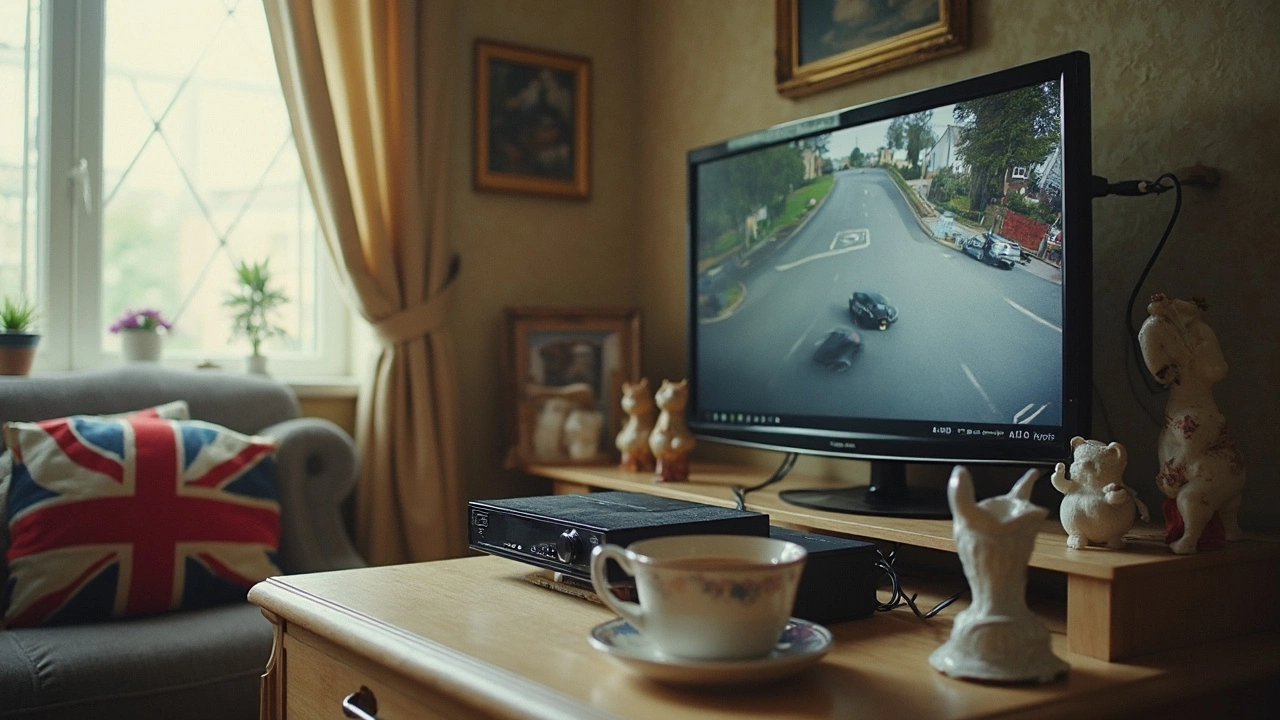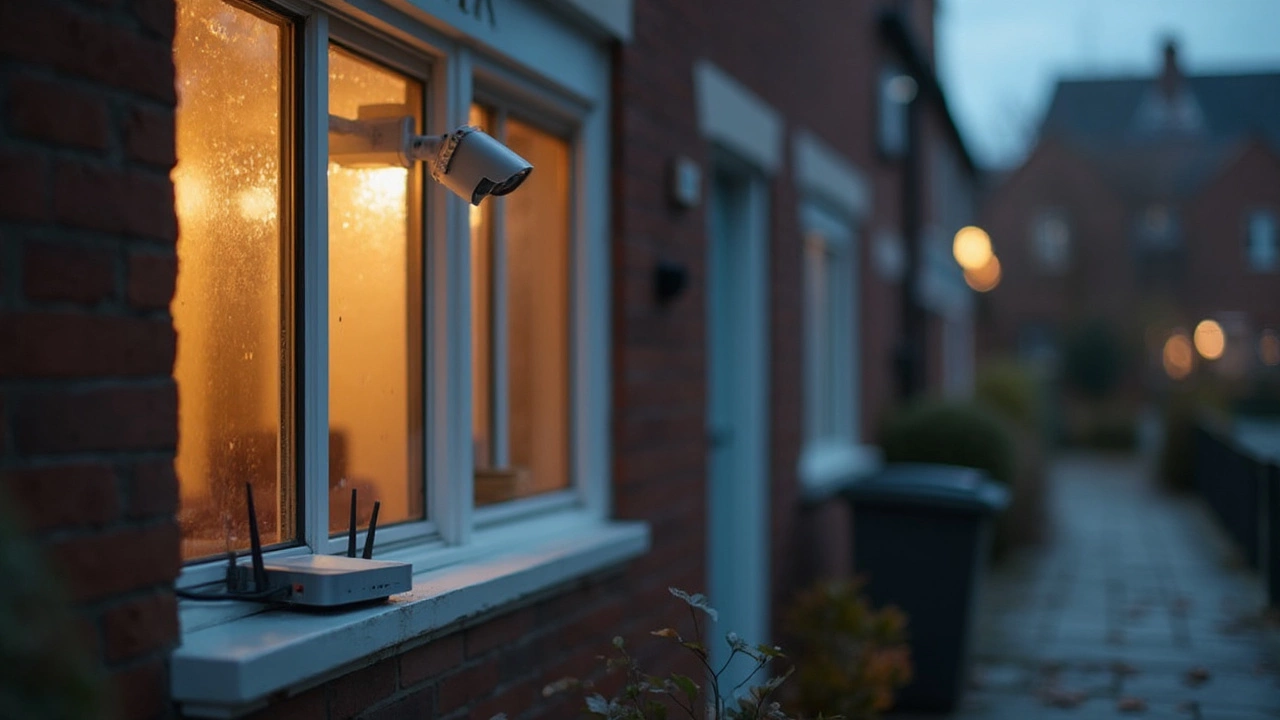Most people think a CCTV camera stops working as soon as it loses internet. Not true. Tons of wireless CCTV kits keep running even if you disconnect your WiFi. The trick is knowing what gets left out without internet—and what still works just fine. It’s way less complicated than techy sales guys make it out to be.
If your cameras save video to an SD card or a hard drive in the DVR or NVR box, you’re already set for basic security even if your internet goes down. The camera keeps recording; you just can’t check live feeds from your phone or get those instant alerts. But let’s be honest—a lot of people barely use those features anyway.
No internet? Still safe. No cloud storage, but you don’t really need it if you’re just protecting your front yard or small business. Stick with local storage and you won’t even notice your WiFi’s off—unless you’re the type who likes to micromanage from the other side of town. Next up, I’ll get into exactly how different cameras act offline (spoiler: some keep more functions than you’d guess).
- How CCTV Cameras Work Without Internet
- What You Lose and What Still Works
- Storing Footage Without Going Online
- Tips for a Hassle-Free Offline Setup
How CCTV Cameras Work Without Internet
Trust it or not, a cctv without internet can still keep an eye on things and save recordings just fine. Most wireless cctv kit cameras connect to a power source, record video, and store that footage locally on an SD card, USB drive, or, if you’ve got more cameras, a DVR or NVR box. The only thing the internet does is let you check your cameras remotely, get alerts on your phone, or back up videos to the cloud.
Here’s how it breaks down:
- The camera needs electricity (either from an outlet or battery) to work. No internet needed for this part.
- If there’s a local storage spot—like an SD card or NVR—footage goes there automatically, no network required.
- You can still view footage by plugging into the system directly, either with a monitor or by taking out the SD card.
A lot of people go for offline cctv because it’s actually more secure. Crooks can’t hack into something that’s not connected to the internet, right?
Just so you have some numbers, here’s a look at the most common storage types you’ll see:
| Storage Type | Can Record Without Internet? | Max Storage (typical) |
|---|---|---|
| SD Card (in camera) | Yes | 32GB-256GB |
| NVR/DVR Box | Yes | 500GB-4TB (varies) |
| Cloud Storage | No | Depends on plan |
So, if you’re worried about an offline cctv system leaving you in the dark, don’t be. The gear just keeps running locally. As long as you don’t need to check your cameras from across town, the setup stays solid—even without any bars on your WiFi.
What You Lose and What Still Works
Let’s get clear on what your cctv without internet setup can and can’t do. When your wireless CCTV kit isn't hooked up online, it doesn’t just go dark. Actual recording, motion detection, and storing video locally all keep running—these features are built-in and don’t rely on the internet at all.
Here’s what usually won’t work without an internet connection:
- Remote viewing from your phone or laptop. Unless you’re physically near the DVR, you can’t peek at live footage.
- Push notifications or alerts to your device. No warning pings if someone sneaks onto your porch.
- Cloud backup and storage. All your footage gets saved locally, usually to an SD card or hard drive in the NVR/DVR.
- Remote control features, like changing camera angles or zoom, if your system supports that.
But what still works? That’s where offline wireless CCTV kit setups shine. Check it out:
- Cameras keep recording 24/7 or on motion, as set up initially.
- Playback from the DVR/NVR still works—just use a monitor connected to the box.
- If your camera has an SD card slot and it’s installed, footage gets saved straight to the card.
- Most basic settings and scheduled recording plans stay locked in, since these are stored locally.
Here’s a quick table that lays out what you gain and lose when you pull the WiFi plug:
| Feature | Works Offline? |
|---|---|
| Live Camera Recording | Yes |
| Motion Detection | Yes |
| Local Playback on DVR/NVR | Yes |
| Remote Viewing (Phone/App) | No |
| Push Notifications | No |
| Cloud Storage | No |
If protecting stuff close to home is the main goal, offline CCTV gets the job done. Just be ready to go old-school if you need to check the footage—think plugging into the DVR, not just pulling up your phone at work.

Storing Footage Without Going Online
Here’s the real deal: you can run a cctv without internet and still save every bit of footage just fine. All it takes is local storage—think SD cards, a DVR (Digital Video Recorder), or an NVR (Network Video Recorder) hooked up to your wireless cctv kit. Most modern cameras come with a slot for a microSD card. Pop in a decent-sized card (32GB, 64GB, or even bigger) and you’ll get anywhere from a few days to two weeks of 24/7 video, depending on your settings.
If you want more than one camera and easier management, a DVR or NVR takes local backup to the next level. These boxes let you plug in a big hard drive—some people go for 2TB or higher. That can hold months of footage, especially if you use smart settings like motion detection to avoid recording empty hallways or yards. Check your kit: most offline cctv systems let you swap out hard drives for even more space.
Lots of folks worry about how often you get footage overwritten. The answer: your devices usually run on a loop. When storage is full, they start recording over the oldest clips. If something important happens, download or back up those videos before they’re gone. And yes, you can pull out the SD card or plug a USB stick into your recorder to save or share stuff with the cops, family, or work team.
- SD Cards: Super easy for one or two cameras, just remember to check capacity and cycle old footage if needed.
- DVR/NVR: Handles lots of cameras, stores way more, and you can set up motion alerts even if you’re not online (as long as you check footage in person).
- USB Backup: Handy if you want a copy quick—no WiFi fuss.
One handy fact—most systems let you review or copy footage on a TV or desktop, right from the local device. No need to mess with cloud accounts, passwords, or paid subscriptions. Saving money and your sanity: not bad perks from keeping your security cameras offline.
Tips for a Hassle-Free Offline Setup
Getting your cctv without internet running smoothly isn’t rocket science, but you’ll want to cover the basics just right. Here are some practical tips to make sure your wireless cctv kit works exactly how you want, without headaches.
- Pick cameras with built-in storage. Cameras that take SD cards or have big storage in the NVR/DVR make life easier. No internet? No problem—your footage stays safe and local.
- Check your power source. Even wireless cameras need power—most use a plug or battery. If you’re going battery-only, keep extras charged up. A dead camera is worse than no camera at all.
- Test your video quality before mounting. Preview the camera angle and clarity before you put it up high. You don’t want to find out later that the shot is fuzzy or misses your front gate completely.
- Position your cameras smartly. Wireless signals only go so far. Thick walls and long distances mess with connections, even offline. Check the signal by dropping your camera where you want it, then see if it talks to the receiver.
- Lock down your local storage. If there’s a slot for an SD card, make sure only you can pop it out. Some people stick tape over it or use a tamper-proof housing—sounds silly, but it works.
- Keep an eye on storage limits. Most kits start overwriting old footage once they’re full. Write down how long your storage lasts at your usual recording pace so you don’t lose the crucial moments.
For fun, here’s how local storage usually plays out with common SD card sizes:
| SD Card Size | Hours of HD Video |
|---|---|
| 32GB | About 48 hours |
| 64GB | About 96 hours |
| 128GB | About 192 hours |
Want more backup? Rotate your SD cards or back up your local footage once a week onto a computer—especially if you use your offline cctv to watch over precious stuff. Staying ahead of these details means you get the peace of mind you want without juggling apps or chasing a dead WiFi signal.

